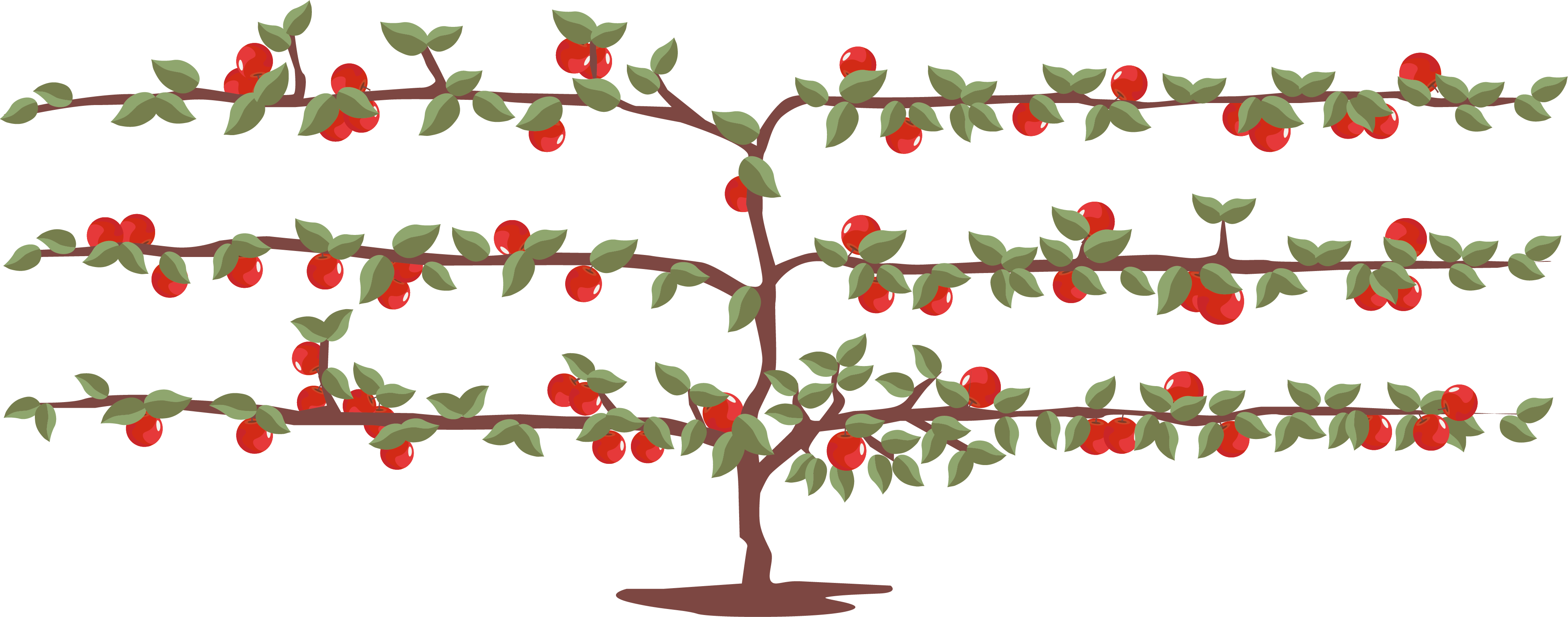- Soil Association
- Take action
- Grow at home
- Allotments and home-growing
- Choosing a tree for your garden

Choosing a tree for your garden
Trees for different needs
Trees can be a hugely beneficial addition to any garden, but it can be hard to know which species is right for you. Here is a handy guide for choosing a tree for your garden, whether you’re looking for something small, colourful or productive.
Smaller garden
Planting in the smaller garden can be challenging and you’d be forgiven for writing trees off all together. But with careful planning there may well be a wealth of options available. Choice of rootstock is particularly important in smaller spaces. However, avoid using very dwarfing rootstocks. Even trees that you are trying to keep small benefit from a rootstock with more vigour and very dwarfing rootstocks tend to produce trees more prone to pest and disease. Instead use summer pruning alongside more traditional winter formative pruning to control the more vigorous rootstocks and keep them manageable.
For something that gives all round value you can’t beat Sambucus nigra, or the common elder. Gorgeous deep purple leaves, spring blossom and edible fruit. It grows as a large shrub so fits well even in smaller gardensBen Raskin, Head of Horticulture and Agroforestry
Production
Fruit trees such as apple, pear, plum and cherry are classics for not only providing abundant harvests, but also beautiful blooms in the spring. If you have a smaller garden, you can also train your apple or pear tree flat against a wall or sturdy fence, or fan training works well for cherries, plums and even apricots, mulberries and figs. Nut trees such as almonds or hazelnut can be an exciting addition, especially if you have mild winters and warm summers. As well as providing a harvest of hazelnuts, hazel leaves are an excellent source of food for caterpillars of a wide range of moths. Hazel can also be coppiced and this open, flower rich habitat will attract butterflies as well as ground-nesting birds such as the nightingale and willow warbler.

Espalier apple tree trained against a wall
Climate
It’s useful to consider the changing climate and what impact this might have, even on the trees in your back garden. Manuka trees, for example, well known for their medicinal honey, are likely to grow more happily in future UK climates. An evergreen shrub with many varieties to choose from, it flowers profusely and over a long period from April through to June. As it is slow growing, this tree is easy to manage, and as a bonus, it tolerates a wide range of clay-rich, hard soils.
Colour
Why not simply plant a tree for the joy of exploring colour palettes, indulging in aesthetics and the simple pleasure of seeing something establish and flourish out of your kitchen window?
I’ve always struggled to choose a single favourite tree species, if you ask me again tomorrow it will be different! I really admire the classical conical shape and lovely autumn colour of the Japanese dawn redwood and equally its botanical name - Metasequoia glyptostroboides.Jon Haines, Agroforestry Advisor
-
Plant a tree for wildlife
Join the Soil Association today and together we can plant more trees for wildlife.
Give a monthly gift
